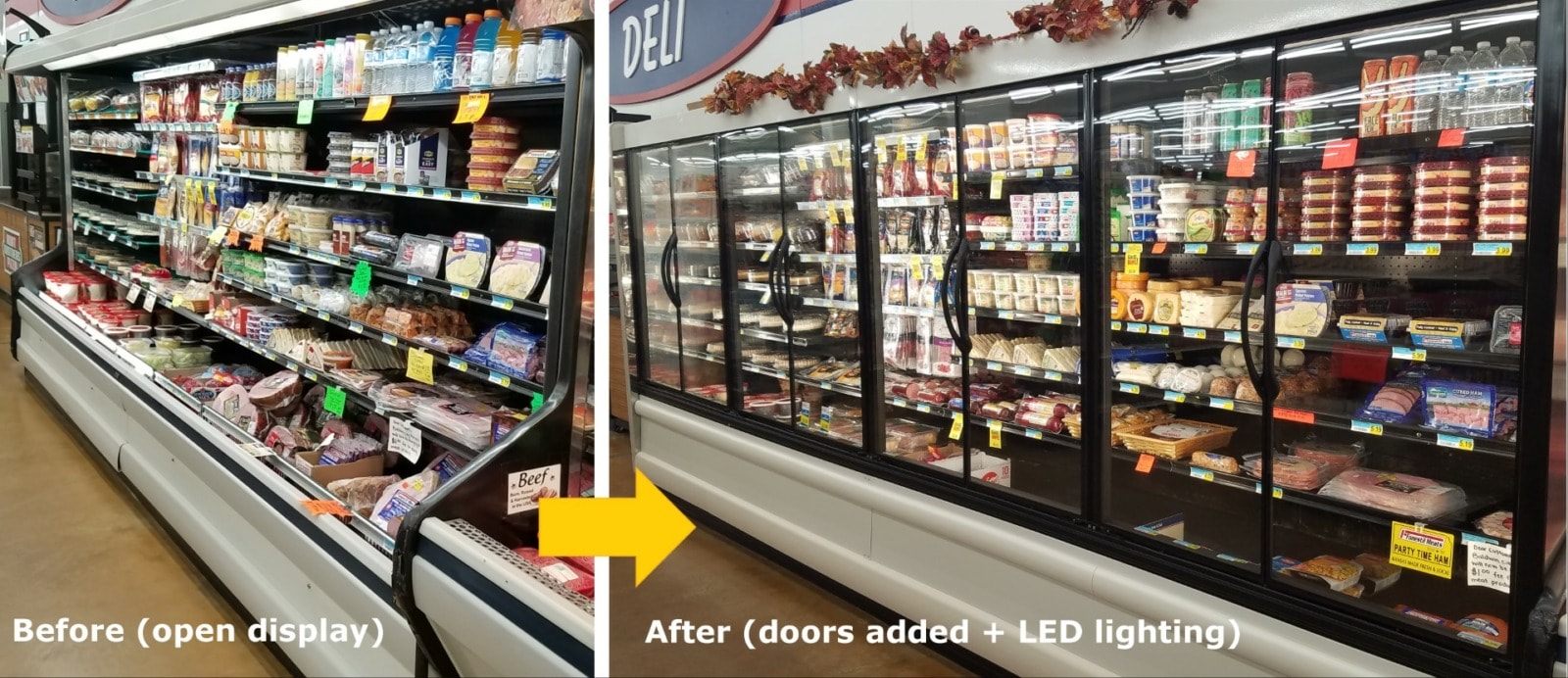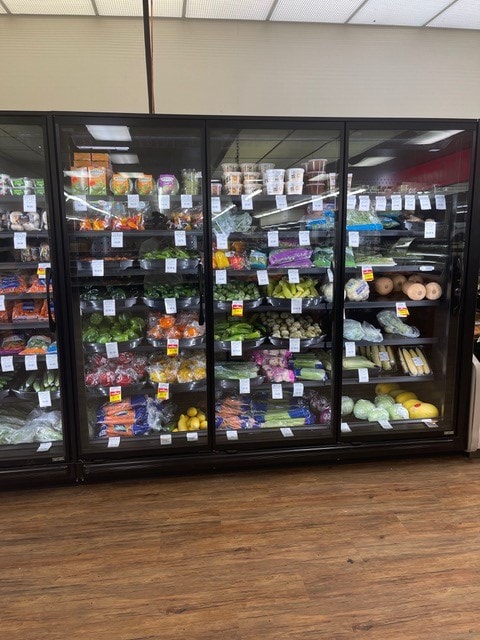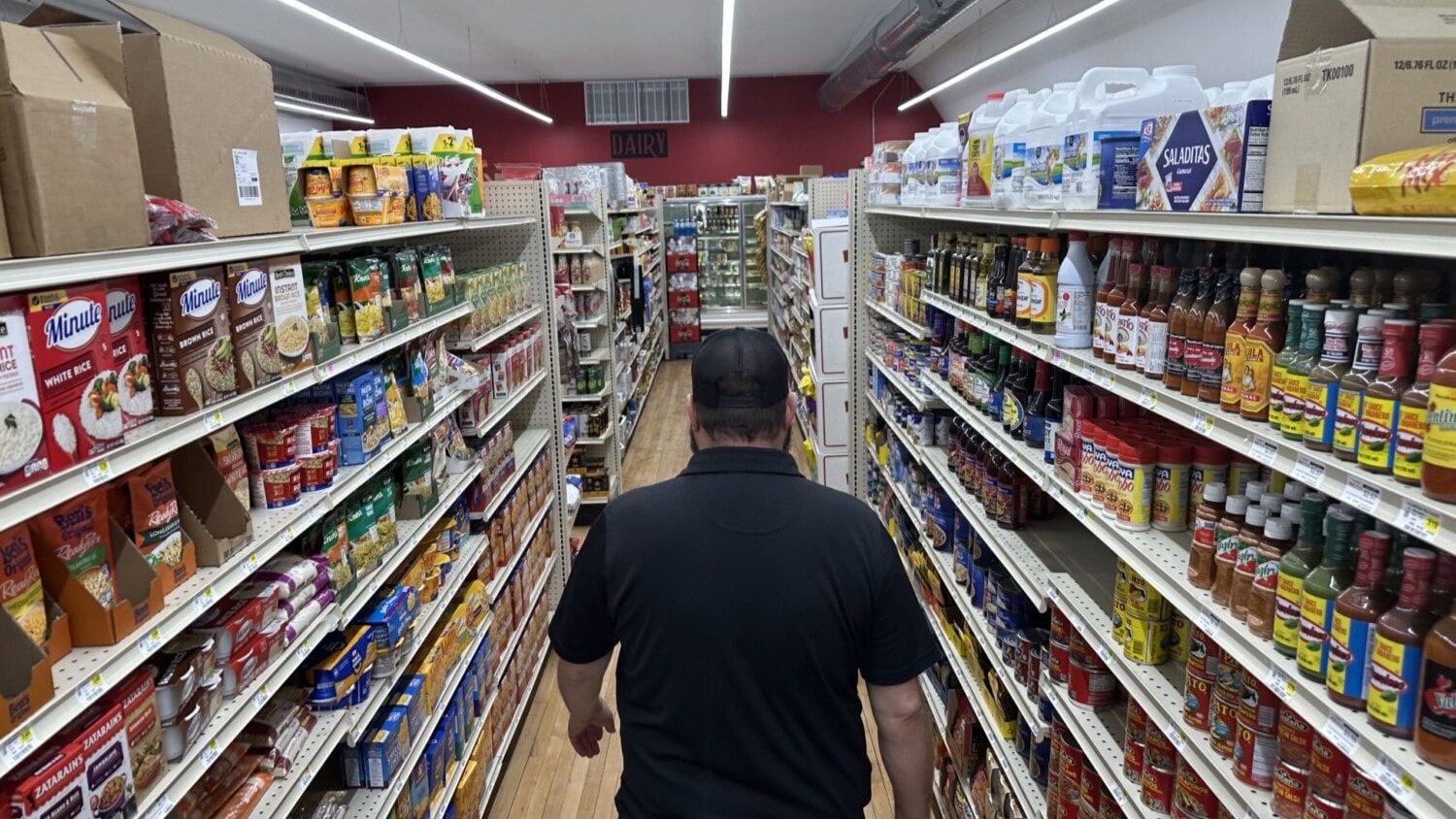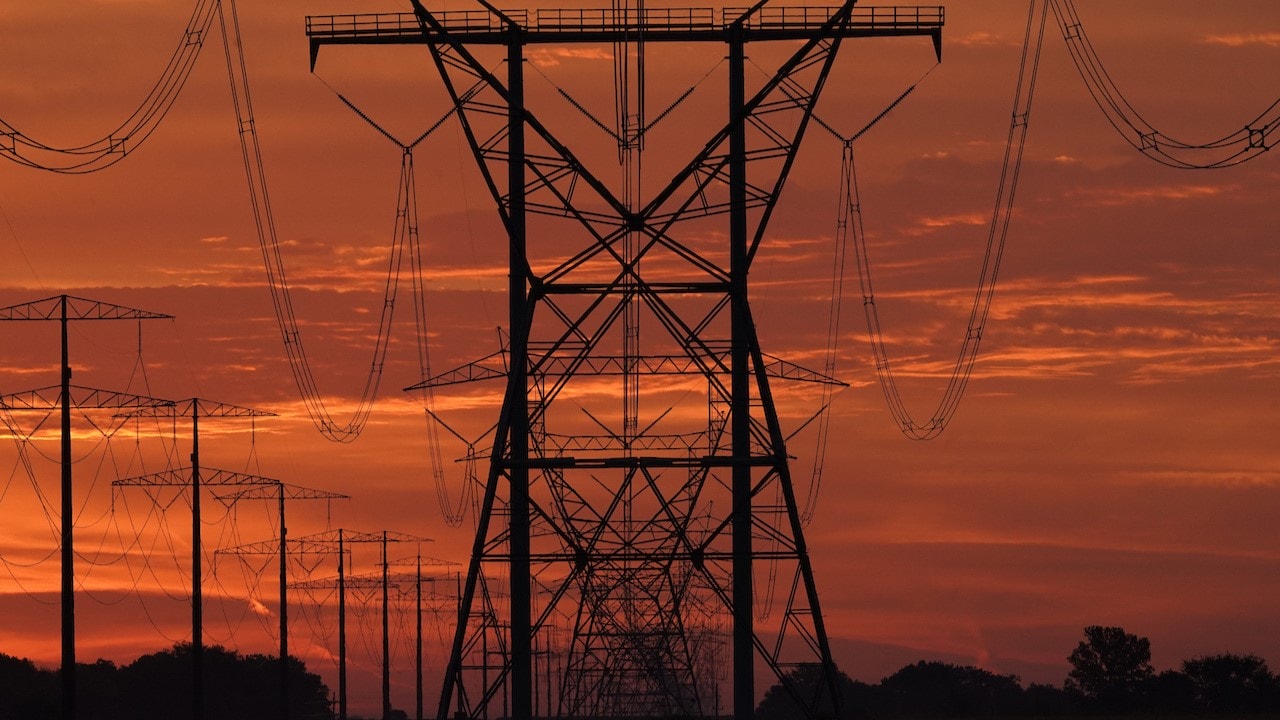Energy Efficiency Program Helps Rural Businesses Keep the Lights On Rural Energy for America Program Funding Supports Sustainability
Published March 12th, 2024 at 4:15 PM
Above image credit: The Bank of Holyrood won a REAP grant to install solar energy panels on its roof. (contributed)For months, the small town of La Crosse, Kansas, and surrounding Rush County, were without a grocery store.
Pat Baalmann and his wife decided to buy the old market – which had been seized from the previous owner for unpaid taxes – with plans to renovate it and open B’s Hometown Market.
“We knew we were going to have to have brand new equipment, so we started searching for grants,” Baalmann said.
The Baalmanns found help through the Rural Energy for America Program (REAP) and were awarded $119,587 in grant money to help buy and install energy efficient refrigerators and LED lighting.
It wasn’t make-or-break funding. But it’s part of the vital layering of incentives and funding that help push rural development projects across the finish line.
“The equipment has been great,” Baalmann said. “With the grant, that just helps free up money for us to help keep moving forward.”
REAP funding and financing has helped more than 300 small businesses and agriculture operations in Kansas implement renewable energy technologies and energy efficient changes.
Last fall, as part of the Inflation Reduction Act, the Biden Administration announced $5 billion in funding for rural development, which included $145 million for REAP.
According to Rural Development U.S. Department of Agriculture (USDA), the purpose of this funding is to “increase American energy independence by increasing the private sector supply of renewable energy and decreasing the demand for energy through energy efficiency improvements.”
‘A True Incentive Program’
Christy Davis, the Kansas director for Rural Development USDA, said the expanded funding means the program now accepts applications on a quarterly basis, rather than an annual basis as before.
“And we’re able to fund a good number of them,” Davis said.
REAP is both a grant and a financing program. Applicants can receive up to 50% funding (an increase from 25%) and loan guarantees for up to 75% of the total project cost.
“The percentage of grant versus loan has gone up,” Davis said. “That’s a big deal and it’s part of the reason that folks are interested in (REAP).”
As a rural specific program, REAP is only available to agriculture operations and small businesses in towns of fewer than 50,000 people.
“Well, that’s most places in Kansas,” Davis said with a laugh.
The majority of projects funded in Kansas are solar projects. But they range in size from rooftop solar on a small business to rural manufacturing facilities and agricultural implementation.
Other projects funded in Kansas include micro-wind energy, anerobic digestors, ethanol distillation, and energy efficiency improvements, like swapping open coolers for closed coolers and adding LED lighting.

“People are very happy with the grants,” Davis said. “It has served the purpose of incentivizing these types of investments.”
This is true for the Bank of Holyrood, which used a REAP grant to help install rooftop solar panels.
“Here in central Kansas, we’ve got plenty of sun,” said Nicholas Pauley, the executive vice president at the bank. “We have a large flat roof as well … so it really was a no-brainer once we started looking.”
The bank first looked at a diesel generator while creating a disaster plan a couple of years ago. But after a nearby solar vendor gave them a quote and informed Pauley about the REAP program, it was an easy decision.
The bank received a $39,942 grant to install 56 rooftop solar panels, which Pauley proudly said can now be seen on Google Maps.
Not only does the bank have a disaster plan, but on a sunny day it can now run on 100% solar power.
“When you’re looking at solar energy, you look at when do I get paid back,” Pauley said. “(REAP) took it from 15 years down to the 7–8-year range.”

Saving Energy to Stay Open
As folks build an application, they need to have an energy audit to show their current and historic energy consumption, and the forecasted reduction by implementing their proposed changes.
The Bank of Holyrood’s expected annual energy reduction is equal to what is needed to power three houses. The changes at B’s Hometown Market save enough energy to power seven houses. While helpful to a strained energy grid and planet, these savings also help the business owners who see a smaller energy bill each month.
Davis said the goal of her department is to make funding opportunities like this as accessible as possible. The Kansas Energy Program is a partnership between the Kansas State University Engineering Extension and the Kansas Corporation Commission, which offers energy audits and application assistance to businesses at no cost.
“Especially for very small businesses, it’s tough for them to pay to have someone come and do that, or invest the time in filling out all these forms not knowing if they’re going to receive that funding or not,” said Ryan Hamel with the Kansas Energy Program.
To build the assessment, Hamel collects historic energy usage data at the business, with the exact specifications of the improvements the business plans to make. For example, a grocery store moving from open refrigeration units to units with doors on it would have very high projected energy savings.

“In order to make these projects make sense, they have to layer all kinds of different incentives and funding opportunities.”
– Christy Davis, Kansas Rural Development U.S. Department of Agriculture
The energy audit process also means an operation can potentially get funding for a lot of projects. Even updating an old heating and air conditioning unit to a newer, more efficient one can show significant savings.
“It’s really been a very great partnership between multiple organizations here to help the small businesses and farmers receive that money, and then keep it within the state of Kansas,” Hamel said.
In a town of 403 people, like Holyrood, or just over 1,200 like La Crosse, Hamel said it’s difficult for a business to expand its customer base.
“So, another way to improve their bottom line would be to reduce their operating expenses,” he said. “This may allow them to reduce their operating expenses enough to stay in business or keep someone employed.”
And for new businesses trying to revitalize a rural area, receiving a grant like REAP can make the endeavor feasible.
“With many projects that we do in rural America, there’s been decades and decades of disinvestment,” Davis said. “In order to make these projects make sense, they have to layer all kinds of different incentives and funding opportunities.”
That was true for the Baalmanns, who wanted to do all they could to provide a vital service to their community.
“It’s a lot of long hours, but this is our life now,” Baalmann said. “We felt it was something we had to do for the community.”
The current application window for REAP funding is open until March 31 and the next round will close June 30. More information on REAP and other rural development projects can be found at rd.usda.gov.
This post has been updated from a previous version.
Cami Koons covers rural affairs for Kansas City PBS in cooperation with Report for America. The work of our Report for America corps members is made possible, in part, through the generous support of the Ewing Marion Kauffman Foundation.




